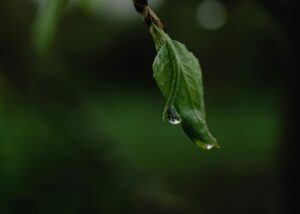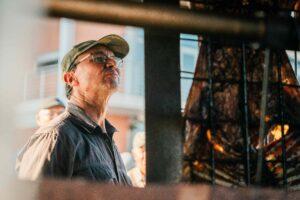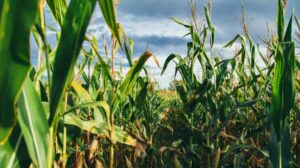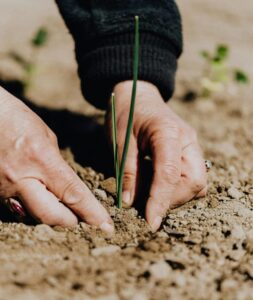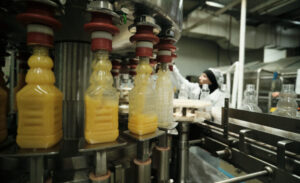Introduction
The Cape wine-growing areas, situated in the narrow viticultural zone of the southern hemisphere, mainly have a Mediterranean climate. The mountain slopes and valleys form the ideal habitat for the wine grape Vitis vinifera, the products of which have given pleasure to humankind for many centuries. Long, sun-drenched summers and mild, wet winters contribute to the ideal conditions for viticulture. The Western Cape produces over 90% of South Africa’s wines.
The wine industry in South Africa goes beyond what is usually understood by the word “wine”. Brandy and its building blocks – rebate wine and distilling wine – as well as grape juice and its concentrate are included, as wine grapes are used to produce all these.
The products below all are relevant to this page.
- Natural wine is non-fortified and non-sparkling wine. It also includes any grape juice or must and grape juice or must concentrate used in the sweetening of such natural wine.
- Fortified wine is non-sparkling wine which has been fortified with wine spirit and has a higher alcohol level than natural wine.
- Sparkling wine which includes any grape juice or must and grape juice or must concentrate used in the sweetening of such sparkling wine.
- Rebate wine is wine specially prepared for double distillation in a copper pot still and then, as distillate, maturation for a period of at least three years in oak casks with a capacity of not more than 340 litres.
- Distilling wine is wine specially prepared for distillation to spirits intended for use in other spirits, for fortification of wine or for industrial purposes.
- Non-alcoholic refers to unfermented, undiluted or concentrated juice from grapes destined for use in non-alcoholic products such as fruit juices.
The wine industry is an important contributor to the economy of the Western Cape region of South Africa. Perhaps, even more important than the direct economic impact of employment and foreign exchange generation is the unique position of wine (and to some extent wine tourism) in generating images of South Africa abroad.
Source: A Profile of the South African Wine Market Value Chain, available at www.nda.gov.za.
Viticulture (from the Latin word for vine) is the science, production and study of grapes which deals with the series of events that occur in the vineyard. When the grapes are used for winemaking, it is also known as viniculture. It is one branch of the science of horticulture.
Oenology (Enology – US English) is the science of wine and winemaking i.e. after vine-growing and grape harvesting.
International overview
The top wine producing countries are France, Italy, Spain, US, and Chile (World Population Review, 2025).
Further reference:
- Find the statistics menu option at www.oiv.int, website of the International Organisation of Vine and Wine (Organisation Internationale de la Vigne et du Vin – OIV).
- A global overview is given in the annual Bureau for Food and Agricultural Policy (BFAP) Baseline. Find the document at www.bfap.co.za.
- World Wine Trade Group (WWTG) www.wwtg-gmcv.org
- www.winespectator.com, wine ratings, features etc
- www.decanter.com, wine reviews, news and more
- www.wineanorak.com, “Jamie Goode’s online wine magazine”
South Africa: imports and exports
All wines for export must be granted an export licence. Samples of each batch of wine destined for foreign countries are sent to the Wine & Spirit Board at Nietvoorbij, Stellenbosch where they undergo detailed tasting tests and chemical analysis in the laboratories before licenses are granted. An official seal is given to each bottle by the Wine & Spirit Board, which verifies that the claims made on the label regarding origin, vintage and grape variety are true.
The South African Wine Industry Information & Systems (SAWIS) South African Export Report breaks down exports into Export and Packaged Export, and then lists top countries by value of exports and then by volume of exports (million litres).
Further reference:
- For advice on export opportunities, or to contact potential overseas agents or distributors, contact Wines of South Africa (WOSA) or visit www.wosa.co.za.
- For export statistics, international grape prices, certification, regulations and issuing of licenses, contact SAWIS or visit www.sawis.co.za.
- The annual BFAP Baseline looks at the export picture of South African wine. Find the document at www.bfap.co.za.
- Reporter. 2025, January 27. “SA wine exports show resilience amid global challenges”. Bizcommunity. Available at www.bizcommunity.com/article/sa-wine-exports-show-resilience-amid-global-challenges-364528a
- Bulbulia T. 2025, January 23. “South African wine exports hampered by contracting global market”. Engineering News. Available at www.engineeringnews.co.za/article/south-african-wine-exports-hampered-by-contracting-global-market-2025-01-23
- Find the “Some articles” sub-heading further down this page for the latest information.
Local business environment
Currently there are around 87 848 hectares of land under vines (WOSA, 2025). Production zones in the Cape winelands are divided into officially demarcated geographical units. There are five regions in the geographical unit of the Western Cape – Breede River Valley, Cape South Coast, Coastal Region, Klein Karoo and Olifants River. Another six geographical units exist: Eastern Cape, Free State, KwaZulu-Natal, Limpopo, North West and Northern Cape, which includes the Karoo-Hoogland region. The South African winelands encompass 30 diverse districts and some 101 smaller wards in total (WOSA, 2025).
An extensive distribution network of wholesalers and retailers, as well as co-operative cellars, estates and other organisations which market wine directly ensure that wine products reach consumers around the country. The huge increase in trade and consumer shows, wine festivals, food and wine festivals and regional festivals has also created an important channel though which wine can be brought directly to the consumer.
The industry contributes to the economy via wine tourism, agriculture, manufacturing, trade and hospitality while generating direct and indirect employment for around 269 096 people throughout the value chain (WOSA, 2024).
Further reference:
- Find “Some articles” under the last heading on this page for recent updates.
- Download the 2024 South African Wine Harvest Report on the Internet.
- Find the “Information & statistics” option at www.sawis.co.za and the industry overview given by WOSA at www.wosa.co.za/The-Industry/Overview/.
- The annual BFAP Baseline includes wine and wine grapes in its projections. Find the document at www.bfap.co.za.
- The SA Wine Industry Directory includes key organisations, producer-businesses, and brands in the industry. These range from boutique outfits, right through private cellars and estate wineries, to co-ops and producing wholesalers. See www.wineland.co.za.
- The Department of Agriculture’s A Profile of the South African Wine Market Value Chain includes a look at production areas, competitiveness of wine exports, entry barriers in some overseas markets and a SWOT analysis (strengths, weaknesses, opportunities and threats). Find the document of the Directorate Marketing’s web pages at www.nda.gov.za.
INDUSTRY ISSUES
Ethical trading, responsible alcohol consumption and socio-economic upliftment
- Association for alcohol responsibility and education (AWARE) https://aware.org.za
- EverGrow Foundation (previously Vinpro Foundation) Tel: 084 393 9881, email info [at] evergrowfoundation.org.za
- Fairtrade Africa https://fairtradeafrica.net Supporting farmers and workers in developing countries (includes South Africa)
- Pebbles Project www.pebblesproject.co.za
- Pinotage Youth Development Academy www.pyda.co.za Find “Pinotage Youth Development Academy – This is who we are!” on YouTube.
- Wine and Agricultural Ethical Trade Association (Wieta) www.wieta.org.za Promoting ethical trade in the wine industry value chain
Broad-Based Black Economic Empowerment (B-BBEE)
The Wine Industry Transformation Charter is regarded by government as a sub-charter of the AgriBEE Charter. It includes scorecards, guidelines and commitment statements from all role players in the wine industry, including the government, to work towards the sustainable implementation of black economic empowerment, land reform and transformation in the wine industry. Find the “B-BBEE” option at www.thedtic.gov.za.
As part of the industry’s commitment to black economic empowerment, transformation and land reform, government, together with organisations, individual producers and related businesses, are actively involved in setting up new producers from historically disadvantaged groups, supporting and uplifting farm workers and their communities, assisting new producers with regard to marketing and access to related services, and offering training.
- Black Association of the Wine & Spirit Industry (Bawsi) BAWSI agitates for the improvement of living conditions of people living on farms and empowerment within this industry.
- The Cape Winemakers Guild (CWG) has several initiatives like Cape Winemakers Guild Protégé Programme (Oenology and Viticulture), Bursaries for Final Year and Post-Graduate Oenology and Viticulture Students, Wine Training South Africa and the mentorship programme Circle of Excellence. Read about these at www.capewinemakersguild.com/development-trust.
- The Wine Arc https://thewinearc.co.za A “brand home for black-owned wine brands and entrepreneurs and a symbol of South Africa’s wine industry transformation”
- VinPro Transformation & Development division www.vinpro.co.za This section of VinPro strives to be a one-stop service – a central point producers can contact when they become involved in B-BBEE.
- SA Wine Industry Transformation Unit (WITU) https://witu.co.za The aim of WITU is “to generate and promote equitable access and participation within the wine value chain in and for the wine industry”. This is the first of nine bullet points. Read more on the website.
Environmental issues
South African wine producers are increasingly aware of the importance of protecting indigenous plant species and environmentally friendly viticulture, and this is used as a unique marketing tool in overseas markets, where consumers are showing a marked preference for wines produced under environmentally friendly conditions.
The Integrated Production of Wine (IPW) is a technical system for sustainable wine production, covering the wine industry as a whole. One of the main principles of the IPW system is that production should be in harmony with nature. The system was created in 1998 and published in accordance with the Liquor Products Act 60 of 1989. It includes guidelines and recommendations on what should be done, as well as minimum standards. See www.ipw.co.za.
Sustainable Wine South Africa (SWSA) www.wosa.co.za/swsa/en/Overview/ Find “A new seal for South African wines, a world first” on YouTube.
WWF-SA The Biodiversity and Wine Initiative (BWI) is a partnership concluded by the South African wine industry and the conservation sector with a view to reducing further encroachment upon the endangered natural habitat to a minimum and contributing to sustainable wine production by accepting guidelines on biodiversity. Visit www.wwf.org.za for more information.
Explore South African WWF Conservation Champion wine farms using the Android or iOS app at http://championwineguide.co.za.
National strategy and government contacts
On the Department of Agriculture website, www.nda.gov.za, find information on and contact details for the following directorates:
- Directorate: Food Safety and Quality Assurance Division Liquor Products. Read the Info Pak “Division Liquor Products” which informs on the responsibilities of this division.
- Directorate: Food Import and Export Standards
- Manager: National Analytical Services
Information includes the Agricultural Products Standards Act, 1990 (Act No 119 of 1990), an Export manual (for liquor products), and Procedures to import liquor products.
Regulations and legislation
You are invited to contact the following for information on how regulations and legislation impact the wine industry:
- South African Liquor Brand Owners’ Association (SALBA) – for customs and excise duty, liquor licensing https://salba.co.za
- Wine and Spirit Board – for certification, government regulations: 021 889 6555
- WOSA – for export requirements: www.wosa.co.za
Role players
View the Premium Listings below (scroll down or click on “Premium Listings” on the Table of Contents to the right).
Further reference:
Companies involved
- The South African Wine Industry Directory include lists of companies and co-operatives. See www.wineland.co.za for details.
Associations and representative bodies
- SOUTH AFRICA WINE “A single voice for the industry”
- South African Liquor Brand Owners’ Association (SALBA) represents manufacturers and distributors of liquor products on issues of common interest e.g. lobbying government on regulatory matters.
- South African Wine Industry Information & Systems (SAWIS) supports the wine industry through the collection, analysis and dissemination of industry information, and the administration of the industry’s Wine of Origin system.
- VinPro represents wine producers, cellars and industry stakeholders on issues that have an impact on the profitability and sustainability of its members and the industry as a whole e.g. technical expertise and specialised services ranging from soil science to viticulture, agricultural economics and transformation and development.
- Wines of South Africa (WOSA) represents producers of wine who export their products and is recognised by government as an Export Council.
- Vinpro and Salba also maintain a WineBiz desk from the offices of Agbiz in Pretoria. See www.agbiz.co.za.
Cultivar development groups
- Cap Classique Producers’ Association (MCCPA) www.capclassique.co.za
- Cape Port Producers’ Association (CAPPA) www.capeportproducers.co.za
- Chardonnay Association of South Africa http://chardonnayassociationsouthafrica.com
- Chenin Blanc Association www.chenin.co.za
- Muscadel South Africa
- Pinotage Association https://pinotage.co.za
- Sauvignon Blanc South Africa http://sauvignonblanc.com
- Shiraz SA www.shirazsa.co.za
- SA Brandy Foundation www.sabrandy.co.za
- SA Pinot Noir Association www.facebook.com/PinotNoirSA/
Regional wine associations and wine routes
- Agulhas Wine Triangle – https://agulhaswinetriangle.co.za
- Bot River Wine Route – www.botriverwines.com
- Breedekloof Wine Valley (Rawsonville) – www.breedekloof.com
- Calitzdorp Wine Route – www.calitzdorp.co.za
- Constantia Wine Route – https://constantiawineroute.com
- Darling Wine and Art Experience – www.darlingtourism.co.za
- Durbanville Wine Valley – www.durbanvillewine.co.za
- Elgin Valley Wine Route – https://elgingrabouw.co.za
- Franschhoek Wine Valley – https://franschhoek.org.za
- Helderberg Wine Route – https://wineroute.co.za/about-us/five-sub-routes/helderberg
- Hemel-en-Aarde Wine Valley – www.hemelenaardewines.com
- Hermanus Wine Route – http://hermanuswineroute.com
- Klein Karoo Wine Route – www.kleinkaroowines.co.za
- KwaZulu-Natal Midlands Meander – https://midlandsmeander.co.za
- Namaqua West Coast Wine Route – https://visitnwc.com/wine-route
- Oranjerivier wynroete – http://orangeriverwines.com
- Paarl Wine Farms – https://visitwinelands.co.za/paarl-wine-route
- Plettenberg Bay Winelands – www.plettwinelands.co.za
- Robertson Wine Valley – www.robertsonwinevalley.com
- Standford Wine Route – www.stanfordinfo.co.za
- Stellenbosch Wine Route – https://wineroute.co.za
- Swartland Wine & Olive Route – www.swartlandwineandolives.co.za
- Tulbagh Wine Route – www.tulbaghwineroute.com
- Wellington Wine Route – https://visitwinelands.co.za/wellington-wine-route
- Worcester Wine and Olive Route – https://worcesterwineroute.com
Find other associations and NGOs under the “Industry issues” sub-heading heading earlier.
Education and training
- Cape Peninsular University of Technology (CPUT) Food Technology – National Diplomas in agriculture and agricultural management, as well as BTech Crop Production (viticulture and oenology) and MTech degrees (viticulture only).
- Cape Wine Academy – A wide range of courses, from appreciation to an in-depth knowledge of wine, are offered at different levels to the public, tertiary institutions for hospitality and tourism, and traders in the liquor industry.
- Elsenburg Agricultural Training Institute – B Agric en B Agric degrees (Cellar Technology, and a Diploma (Cellar Technology) comprising wine chemistry, microbiology, oenology, marketing, legislation and management.
- FoodBev Seta is the SETA responsible for facilitating education and training in the food and beverages manufacturing sector.
- South African Agri Academy Practical training in the industry, focusing on strategic market access and exports, and mentorships for emerging producers in the wine industry.
- South African Wine Industry Professional Body (SAWIPB) www.sawipb.co.za
- Stellenbosch University (i) Dept of Viticulture & Oenology – Undergraduate and postgraduate degrees in Agriculture, Agricultural Administration and the opportunity to specialise in Viticulture and Oenology. (ii) South African Grape and Wine Research Institute (SAGWRI) – Postgraduate studies in Agriculture or Viticulture and Wine Biotechnology from an honours degree to a doctorate. This is part of the Department of Viticulture & Oenology.
- Wine Training South Africa Workshops and accredited training
Research and development
Several institutions and research bodies undertake important research, and the knowledge gleaned from this is ploughed back into the industry in the form of journals, magazines, and presentations at information days or farmers’ days. Producers pay a statutory levy, part of which is allocated to research. Government institutions, private businesses, financial institutions and so forth also contribute financially.
- ARC Infruitec-Nietvoorbij, a world-renowned, one-stop research facility for industries such as deciduous fruit, grapes, wine, brandy and several others. The campus supplies a needs-driven service in order to ensure the economic viability and growth of these industries, and research is strictly focused on practical implementation.
- ARC-Plant Health and Protection – Research on vineyard pests
- South African Grape and Wine Research Institute (SAGWRI) replaces the previous Institute for Wine Biotechnology (IWBT).
- SA Society for Enology and Viticulture (SASEV) serves “as a forum for presenting the latest scientific information to all South African wine and grape producers to improve the quality of South African wines and related products, and to make this technology available internationally”.
- Vine Improvement Association – manages the South African Plant Certification Scheme for Wine Grapes as provided by the Plant Improvement Act 53 of 1976. Plant improvement occurs uniformly by applying regulations regarding vine cultivation and the selection, evaluation, testing and release of viticultural material.
- VinPro – research projects are conducted, usually with the producer in mind. Technology is also made available by the VinPro Consultation Service via its regional viticultural consultants, soil scientist and oenologist.
Websites and publications
Refer to the websites and publications listed earlier on this page like www.sawis.co.za and www.vinpro.co.za.
- Visit the Wine Farms South Africa website, www.sa-wine-farms.co.za/portal.
- In addition to the South African Wine Industry Directory, WineLand Media also does other publications like WineLand and the VinPro Cost Guide. Visit www.wineland.co.za for more information.
- Documents like the Certification Manual and Labelling guide for South African wine are available from SAWIS. Find details at www.sawis.co.za.
- Find details of the South African Journal for Enology and Viticulture at www.journals.ac.za/index.php/sajev.
- Find the Technical Yearbook, published under the South Africa Wine banner, at https://sawine.co.za/research-development-and-innovation-rdi/knowledge-transfer/technical-yearbooks/
- I and M Futureneer Advisors Pty Ltd. 2023. The Economic Value of the Wine Tourism Industry. Available at https://mcusercontent.com/4a0bfbafee177193b47362c01/files/d2606830-a065-8983-8dc3-d5cec7fbf8f9/Economic_Value_of_Wine_Tourism_in_SA_2022_1Feb_2024.01.pdf
- A series of full colour pamphlets from the ARC Infruitec-Nietvoorbij discusses how to identify, control and prevent various diseases and pests in the vineyard. Call 021 809 3100.
- Order online at www.arc.agric.za, call 012 842 4017 or send an email to stoltze [at] arc.agric.za for the following publication, available from the ARC Agricultural Engineering: Agro-processing of fermented beverages –Wine.
- Find the annual Industrial Products: Wine Market Value Chain or “A Profile of the South African Wine Market Value Chain” on the Department of Agriculture Directorate Marketing’s web pages at www.nda.gov.za.
- Read about (and order) The Wine Kingdom: Celebrating conservation in the Cape winelands at www.wwf.org.za.
- Find books like Biodynamic Wine Guide 2011 and Biodynamic Wine-Growing: Theory and Practice: A Practical Guide to the Theory and Practice of Biodynamic Wine-Growing by Monty Waldin on www.amazon.com and Google Books.
- “Buy wine direct from the cellar”, https://cellardirect.co.za
- The Wine Farmer, an online shop selling “some of the best family wines” www.thewinefarmer.co.za.
Some articles
- Read our blogs “Hartenberg Estate Achieves SA’s First Regenerative Viticulture Verification” and “Five new farms attain WWF Conservation Champion status” (2021), at https://agribook.co.za.
- Manoko T. 2025, June 21. “New multi-million rand wine fund backs black-owned brands.” Food for Mzansi. Available at www.foodformzansi.co.za/new-multi-million-rand-wine-fund-backs-black-owned-brands
- Staff Reporter. 2025, June 16. “Vergelegen’s Estate White 2023 wins best South African white wine at the International Wine Challenge.” IOL. Available at https://iol.co.za/capeargus/news/2025-06-16-vergelegens-estate-white-2023-wins-best-south-african-white-wine-at-the-international-wine-challenge
- Reporter. 2025, May 27. “SA wine industry maps bold future amid global and local pressures .” Bizcommunity. Available at www.bizcommunity.com/article/sa-wine-industry-maps-bold-future-amid-global-and-local-pressures-362108a
- Sihlobo W. 2025, May 8. “The excellent wine grape harvest of 2025 signifies the recovery in SA agriculture”. Agricultural Economics Today. Available at https://wandilesihlobo.com/2025/05/08/the-excellent-wine-grapes-harvest-of-2025-signifies-the-recovery-in-sa-agriculture/
- Stemmet A-B. 2025, April 4. “What Trump’s new tariffs could mean for South African wine exports”. Bizcommunity. Available at www.bizcommunity.com/article/what-trumps-new-tariffs-could-mean-for-south-african-wine-exports-258367a
- Reporter. 2025, January 9. “SA wine industry shows resilience, eyes brighter 2025”. Bizcommunity. Available at www.bizcommunity.com/article/sa-wine-industry-shows-resilience-eyes-brighter-2025-920404a
- King S-J M. 2024, December 4. “SA wine industry has shot itself in the foot, says local winemaker”. PRIMEDIA+. Available at www.primediaplus.com/2024/12/04/sa-wine-industry-has-shot-itself-in-the-foot-says-local-winemaker
- Staff Reporter. 2024, November 30. “Wine industry up in arms over proposed excise tax hike”. Food for Mzansi. Available at www.foodformzansi.co.za/wine-industry-up-in-arms-over-proposed-excise-tax-hike
- Staff Reporter. 2024, November 27. “OWSA sets stage for SA’s organic wine future”. Food for Mzansi. Available at www.foodformzansi.co.za/owsa-sets-stage-for-sas-organic-wine-future
- Msiza T. 2024, November 5. “Agbiz and South Africa Wine Host Successful Media Day at Picardi Farm”. Agbiz. Available at www.agbiz.co.za/blog/details/agbiz-and-south-africa-wine-host-successful-media-day-at-picardi-farm
- Staff Reporter. 2024, November 7. “ESG practices crucial for future of SA wine industry”. Food for Mzansi. Available at www.foodformzansi.co.za/esg-practices-crucial-for-future-of-sa-wine-industry/
- South Africa Wine Admin. 2024, September 17. “Economic Partnership Agreement between SA & EU”. South Africa Wine. Available at https://sawine.co.za/economic-partnership-agreement-between-sa-eu/
- Pillay V. 2024, July 28. “Meet two young black women taking on the white male-dominated wine industry”. IOL. Available at www.iol.co.za/business/jobs/meet-two-young-black-women-taking-on-the-white-male-dominated-wine-industry-6cdb8a2e-c059-4c50-921d-e90ee59680ae
- Reporter. 2024, July 9. “Wine in cartons gain popularity”. Bizcommunity. Available at www.bizcommunity.com/article/wine-in-cartons-gain-popularity-347598
- Reporter. 2024, May 29. “South Africa’s wine production to reach 857.1 million litres in 2024”. TRIDGE. Available at www.tridge.com/news/south-africas-wine-production-to-reach-8571–bqiupp
- Reporter. 2024, May 27. “SA wine industry charts path forward at inaugural summit”. Bizcommunity. Available at www.bizcommunity.com/article/sa-wine-industry-charts-path-forward-at-inaugural-summit-562690a
- Bayley J. 2024, May 20. “South African wine industry adapts to 2024 harvest challenges”. Harpers. Available at https://harpers.co.uk/news/fullstory.php/aid/32795/South_African_wine_industry_adapts_to_2024_harvest_challenges.html
- Zondo B & Sotsha K. 2024, April. “Unpacking challenges faced by the SA wine industry”. Business Report. Available at www.msn.com/en-za/news/other/unpacking-challenges-faced-by-the-sa-wine-industry/ar-BB1l7ABN
- Reporter. 2024, March 26. “Swapping Bordeaux for Kent, climate change to shift wine regions: Study”. PHYS.ORG. Available at https://phys.org/news/2024-03-swapping-bordeaux-kent-climate-shift.html
- Crouth G. 2024, February 5. “Glass half empty: Worrying trends emerge for South Africa’s wine industry”. Daily Maverick. Available at www.dailymaverick.co.za/article/2024-02-05-worrying-trends-emerge-for-south-africas-wine-industry/
- Burger S. 2023, September 20. “Vergelegen winery goes off grid”. Engineering News. Available at www.engineeringnews.co.za/article/vergelegen-winery-goes-off-grid-2023-09-20

